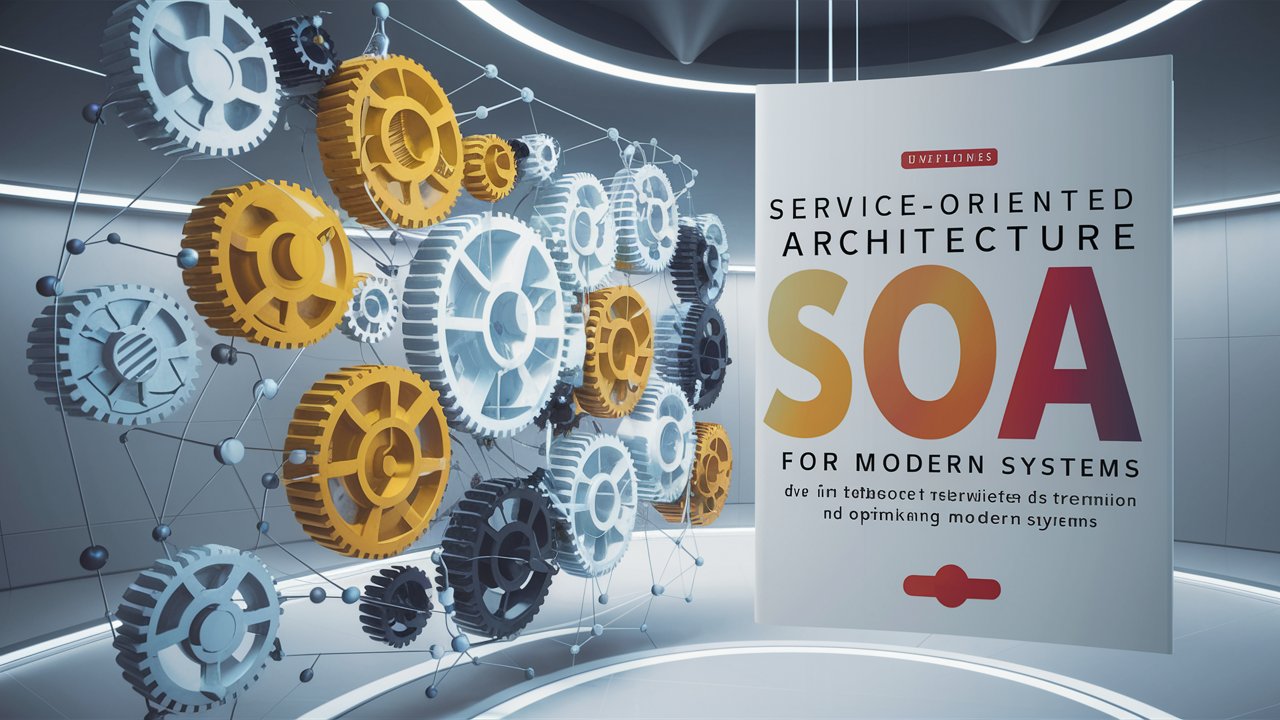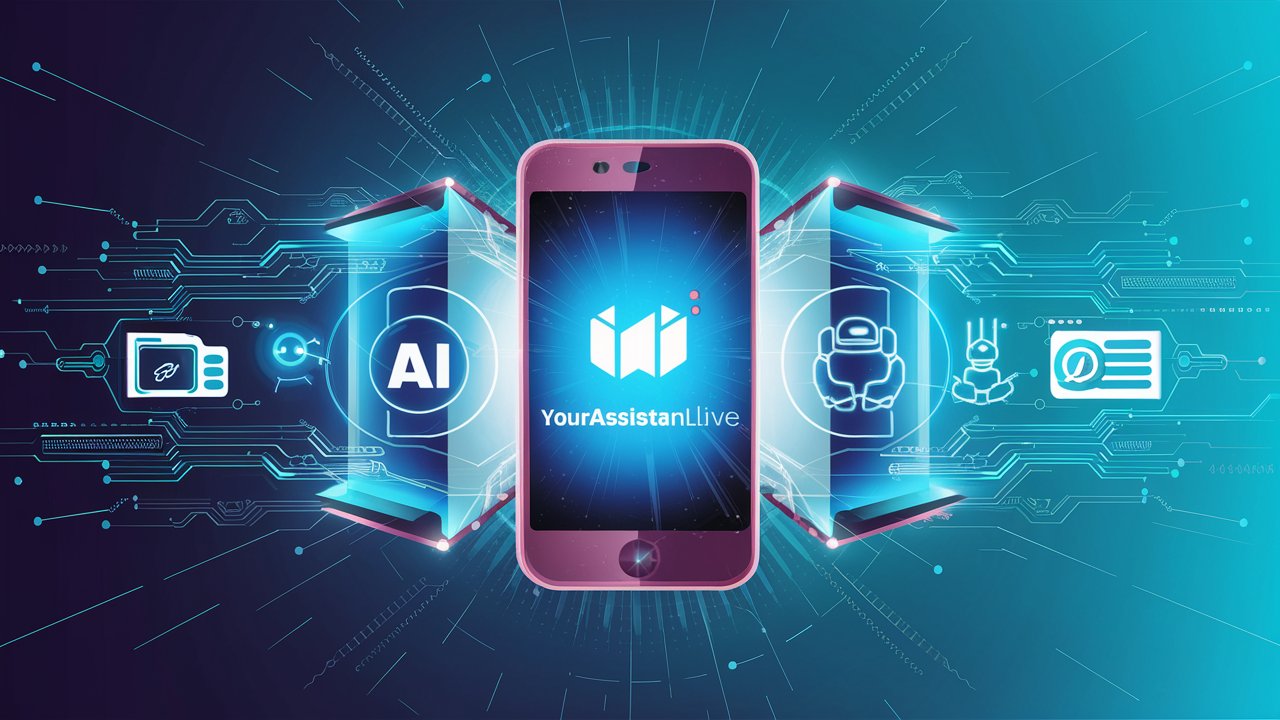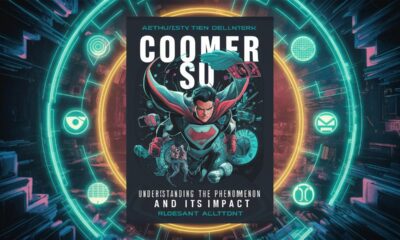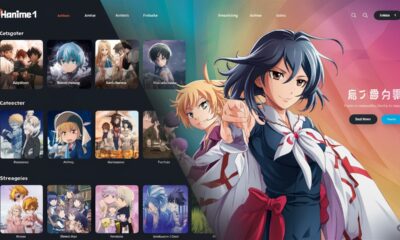Technology
SOA OS23: Complete Guide to Service-Oriented Architecture in Modern Systems

In today’s rapidly evolving digital world, Service-Oriented Architecture (SOA) has become a foundational approach for designing and managing enterprise-level systems. The SOA OS23 model is one of the most robust frameworks that emphasizes flexibility, scalability, and integration. As organizations seek more agile systems to meet ever-changing customer demands, SOA OS23 emerges as a vital solution for enabling interoperability and efficiency across multiple services.
In this comprehensive guide, we will explore everything about SOA OS23, including its architecture, benefits, core principles, use cases, and future trends. By the end of this article, you will have a deep understanding of why businesses across industries are adopting SOA OS23 for long-term growth and digital transformation.
What is SOA OS23?
SOA OS23 refers to a modernized service-oriented architecture model that focuses on creating reusable, independent services which communicate through standardized interfaces and protocols. Unlike traditional monolithic architectures, SOA OS23 provides a modular design that separates functions into independent units known as services.
These services are loosely coupled, meaning that they can be developed, deployed, and scaled independently without disrupting other components. This flexibility makes SOA OS23 highly effective for large enterprises managing complex IT ecosystems.
Core Principles of SOA OS23
The SOA OS23 model is built on several core principles that guide its structure and efficiency:
-
Loose Coupling – Services interact with minimal dependency, ensuring system resilience.
-
Interoperability – OS23 allows services built on different platforms and programming languages to communicate seamlessly.
-
Reusability – Once a service is created, it can be reused across multiple applications and business processes.
-
Discoverability – Services are easily searchable and identifiable within the architecture.
-
Scalability – SOA OS23 allows organizations to expand systems without disrupting existing functionalities.

SOA OS23 Architecture Overview
The SOA OS23 architecture is composed of several key components:
-
Service Providers – These develop and publish services for use within the system.
-
Service Consumers – Applications or systems that request and use the services.
-
Service Registry – A centralized repository where available services are published and discovered.
-
Service Contract – Defines the formal agreement and communication rules between providers and consumers.
-
Middleware & Messaging Layer – Ensures secure and reliable communication between services.
This layered approach ensures that SOA OS23 remains adaptable, secure, and efficient in handling business operations.
Key Benefits of SOA OS23
Adopting SOA OS23 brings a multitude of advantages for enterprises:
-
Enhanced Agility – Enables quick adaptation to changing business requirements.
-
Cost Efficiency – Reduces duplication of effort by reusing services.
-
Improved Integration – Seamlessly connects legacy systems with modern applications.
-
Faster Time-to-Market – Speeds up application development and deployment.
-
High Scalability – Easily scales resources based on organizational needs.
SOA OS23 vs. Traditional Architecture
Unlike traditional monolithic architectures, where all components are tightly coupled, SOA OS23 breaks down systems into smaller, manageable units. This results in:
-
Better fault tolerance – If one service fails, it does not bring down the entire system.
-
Independent updates – Developers can update or modify services without affecting other parts of the system.
-
Cloud readiness – Perfectly aligns with cloud-native approaches and microservices.
Applications and Use Cases of SOA OS23
The SOA OS23 framework is widely applied across industries due to its flexibility:
-
Banking & Finance – For secure transactions, fraud detection, and payment gateways.
-
Healthcare – Enables interoperability between different healthcare management systems.
-
E-commerce – Streamlines order processing, payment integration, and customer management.
-
Telecommunications – Facilitates billing systems, customer service platforms, and data management.
-
Government & Public Services – Simplifies citizen services, data sharing, and inter-departmental coordination.
SOA OS23 and Cloud Integration
One of the strongest features of SOA OS23 is its compatibility with cloud-based infrastructures. Cloud platforms such as AWS, Azure, and Google Cloud can easily host SOA-based services, enabling enterprises to scale globally. The OS23 model allows organizations to embrace hybrid and multi-cloud strategies without compromising security or performance.
Challenges in Implementing SOA OS23
While highly effective, implementing SOA OS23 comes with its challenges:
-
Initial Complexity – Requires skilled professionals for setup and deployment.
-
Governance Issues – Without proper governance, service duplication and inefficiency can arise.
-
Security Concerns – Exposing services may increase vulnerability if not properly secured.
-
Performance Overheads – Service interactions may introduce latency in some cases.
Despite these challenges, the benefits of SOA OS23 far outweigh the drawbacks when managed effectively.
Future of SOA OS23
With the rise of artificial intelligence, machine learning, and IoT, the SOA OS23 framework is expected to evolve further. It is increasingly being integrated with microservices and API-driven development, providing more robust and scalable digital ecosystems.
As businesses continue to digitize operations, SOA OS23 will play a central role in shaping next-generation enterprise solutions.
Conclusion
SOA OS23 is not just an architectural framework; it is a strategic approach that empowers organizations to achieve efficiency, agility, and scalability in their IT systems. From enabling seamless integration of services to supporting modern cloud environments, SOA OS23 has become a backbone for enterprises across industries.
By embracing SOA OS23, businesses can future-proof their operations, reduce costs, and enhance digital transformation efforts.
FAQs about SOA OS23
Q1: What does SOA OS23 stand for?
SOA OS23 stands for a modernized Service-Oriented Architecture framework, emphasizing flexibility and service reusability.
Q2: How does SOA OS23 differ from microservices?
While both focus on modularity, SOA OS23 is broader, covering enterprise-wide service integration, while microservices focus on smaller, lightweight, and independently deployable services.
Q3: Is SOA OS23 suitable for small businesses?
Yes, though primarily designed for large enterprises, small businesses can also leverage SOA OS23 for scalability and integration with third-party services.
Q4: What are the main benefits of SOA OS23?
Key benefits include cost savings, improved agility, interoperability, faster deployment, and better scalability.
Q5: Can SOA OS23 work with cloud systems?
Absolutely. SOA OS23 aligns seamlessly with cloud-native environments, making it an excellent choice for hybrid and multi-cloud strategies.
Technology
YourAssistantLive com: The Complete Guide to Intelligent, Real-Time Digital Assistance

We present a comprehensive exploration of YourAssistantLive com, a next-generation platform designed to redefine how individuals and businesses access intelligent, real-time digital assistance. In an era where speed, accuracy, and personalization determine success, YourAssistantLive com stands as a centralized solution for automation, productivity, and customer engagement. This guide delivers an in-depth analysis of the platform’s capabilities, benefits, and strategic applications, ensuring a clear understanding of why YourAssistantLive com is positioned as a leader in intelligent assistance.
What Is YourAssistantLive com?
YourAssistantLive com is a dynamic digital assistant ecosystem engineered to provide real-time support, AI-powered automation, and scalable assistance across multiple use cases. We leverage advanced natural language processing, workflow automation, and adaptive learning to deliver assistance that evolves with user needs. From entrepreneurs and remote teams to enterprises seeking operational efficiency, YourAssistantLive com offers a unified interface that centralizes tasks, communication, and insights.
Core Features of YourAssistantLive com
Real-Time Intelligent Assistance
At the heart of YourAssistantLive com lies a powerful real-time engine that responds instantly to user requests. We ensure seamless interactions through conversational interfaces that understand intent, context, and urgency. This capability reduces response times, eliminates bottlenecks, and enhances decision-making across workflows.
AI-Driven Automation and Workflows
We integrate AI-driven automation to streamline repetitive tasks, manage schedules, handle data entry, and orchestrate multi-step workflows. YourAssistantLive com empowers users to automate processes without complexity, freeing valuable time for strategic initiatives.
Personalized User Experience
Personalization is a defining strength of YourAssistantLive com. The platform adapts to user behavior, preferences, and historical interactions to deliver tailored recommendations and actions. This adaptive intelligence ensures relevance and consistency across every engagement.
Secure and Scalable Infrastructure
Security and scalability are foundational. YourAssistantLive com employs enterprise-grade encryption, role-based access controls, and scalable cloud infrastructure. We support growth from individual users to global teams without compromising performance or data integrity.
Key Benefits of Using YourAssistantLive com
Enhanced Productivity and Efficiency
We enable users to accomplish more in less time by consolidating tools and automating routine tasks. YourAssistantLive com reduces cognitive load and operational friction, resulting in measurable productivity gains.
Improved Customer Engagement
For customer-facing teams, YourAssistantLive com delivers consistent, accurate, and timely responses. We support omnichannel communication, ensuring customers receive seamless assistance across platforms while maintaining brand voice and quality.
Cost Optimization
By automating manual processes and reducing reliance on fragmented tools, YourAssistantLive com contributes to significant cost savings. We help organizations optimize resources while maintaining high service standards.
Actionable Insights and Analytics
Data-driven insights are embedded into the platform. YourAssistantLive com provides real-time analytics, performance metrics, and usage trends that inform strategic decisions and continuous improvement.
Use Cases for YourAssistantLive com
Business Operations and Management
We support operations teams with task orchestration, reporting automation, and intelligent reminders. YourAssistantLive com ensures operational continuity and visibility across departments.
Customer Support and Service
Customer support teams leverage YourAssistantLive com for ticket management, response automation, and knowledge base integration. We enhance resolution speed and customer satisfaction through intelligent routing and contextual responses.
Marketing and Sales Enablement
We empower marketing and sales professionals with lead qualification, follow-up automation, and personalized outreach. YourAssistantLive com aligns messaging with customer intent, improving conversion rates.
Remote Work and Collaboration
For distributed teams, YourAssistantLive com centralizes communication, task tracking, and collaboration. We enable alignment and accountability regardless of location.

Why YourAssistantLive com Outperforms Alternatives
Unified Platform Advantage
Unlike fragmented tools, YourAssistantLive com delivers a unified ecosystem that integrates assistance, automation, and analytics. We eliminate tool sprawl and complexity, providing a single source of truth.
Adaptive Intelligence
Our adaptive learning capabilities ensure continuous improvement. YourAssistantLive com evolves with usage patterns, delivering increasingly accurate and relevant assistance over time.
Enterprise-Ready Customization
We offer flexible customization to meet industry-specific requirements. YourAssistantLive com adapts to workflows, compliance standards, and organizational structures without extensive development.
SEO-Driven Titles and Keyword Explanations
YourAssistantLive com for Intelligent Automation
This title emphasizes intelligent automation, targeting users seeking AI-driven efficiency solutions.
YourAssistantLive com Real-Time Digital Assistant
By focusing on real-time digital assistance, this title captures intent-driven searches for instant support platforms.
YourAssistantLive com Productivity and Workflow Optimization
This keyword-rich title aligns with users aiming to enhance productivity through workflow optimization.
YourAssistantLive com Secure AI Assistant Platform
Security-focused keywords address enterprise and compliance-conscious audiences.
Each title strategically incorporates YourAssistantLive com as the primary keyword, reinforcing brand authority and search relevance.
How We Maximize Value with YourAssistantLive com
We implement YourAssistantLive com as a strategic asset rather than a standalone tool. By aligning platform capabilities with organizational goals, we ensure measurable outcomes across productivity, engagement, and growth. Continuous optimization, user training, and analytics-driven refinement unlock the full potential of intelligent assistance.
Future of Intelligent Assistance with YourAssistantLive com
The evolution of digital assistance is accelerating. YourAssistantLive com is positioned at the forefront, integrating emerging AI models, predictive analytics, and autonomous workflows. We anticipate expanded capabilities that further blur the line between human and digital collaboration, delivering unprecedented efficiency and insight.
Conclusion
YourAssistantLive com represents a transformative approach to real-time digital assistance. Through intelligent automation, personalized experiences, and enterprise-grade scalability, we deliver a platform that empowers users to operate smarter and faster. As demands for efficiency and responsiveness grow, YourAssistantLive com stands as a reliable, future-ready solution for individuals and organizations alike.
Frequently Asked Questions (FAQ)
What makes YourAssistantLive com unique?
YourAssistantLive com combines real-time assistance, AI automation, and adaptive learning in a unified platform designed for scalability and security.
Is YourAssistantLive com suitable for small businesses?
Yes, we support individuals, startups, and enterprises with flexible configurations that scale with growth.
How secure is YourAssistantLive com?
We implement enterprise-grade security measures, including encryption and access controls, to protect data and ensure compliance.
Can YourAssistantLive com integrate with existing tools?
We support integrations with popular productivity, communication, and data platforms to ensure seamless workflows.
Does YourAssistantLive com improve customer support efficiency?
Yes, intelligent routing, automation, and contextual responses significantly enhance support efficiency and satisfaction.
Technology
Pasonet: A Comprehensive Guide to a Modern Digital Network Ecosystem

Pasonet represents a modern approach to digital networking, connectivity, and intelligent online infrastructure designed to meet the evolving demands of businesses, organizations, and individuals operating in a data-driven world. We recognize that today’s digital environment requires more than basic connectivity; it demands stability, scalability, security, and performance. Pasonet addresses these demands through an integrated ecosystem that supports seamless communication, efficient data transmission, and optimized network management.
As organizations continue to rely heavily on cloud computing, remote collaboration, and high-bandwidth applications, Pasonet has emerged as a keyword synonymous with reliable network solutions and future-ready connectivity. In this guide, we explore Pasonet in depth, examining its core features, benefits, applications, and strategic importance in the modern digital landscape.
Understanding Pasonet and Its Core Concept
At its foundation, Pasonet is built around the idea of intelligent networking. We view it as a unified network framework that combines advanced routing, optimized bandwidth allocation, and proactive monitoring into a single, cohesive system. Rather than operating as a fragmented collection of services, Pasonet integrates every network layer to deliver consistent performance and operational efficiency.
This holistic design allows networks to adapt dynamically to usage patterns, reduce latency, and ensure uninterrupted service even during peak demand. The result is a network environment that supports growth without compromising reliability.
Key Features That Define Pasonet
High-Performance Network Architecture
Pasonet is recognized for its high-performance infrastructure engineered to handle intensive data loads. We emphasize optimized traffic flow, intelligent routing paths, and minimal packet loss, ensuring that critical applications function without disruption.
Scalability and Flexibility
One of the defining strengths of Pasonet network solutions is their ability to scale seamlessly. As organizations expand, Pasonet adapts to increased demand without requiring costly overhauls. This flexibility supports both small-scale deployments and enterprise-level infrastructures.
Advanced Security Integration
Security is a central pillar of Pasonet. We integrate robust encryption protocols, real-time threat detection, and secure access controls directly into the network framework. This proactive approach safeguards sensitive data and minimizes exposure to cyber threats.
Reliability and Uptime Optimization
Downtime translates directly into lost productivity and revenue. Pasonet focuses on network redundancy, failover mechanisms, and continuous monitoring to maintain maximum uptime. This reliability makes it a preferred choice for mission-critical operations.
Benefits of Implementing Pasonet
Enhanced Operational Efficiency
By consolidating network management into a unified system, Pasonet reduces complexity and administrative overhead. We achieve faster troubleshooting, simplified configuration, and improved visibility across the entire network.
Improved User Experience
End users benefit from consistent speeds, low latency, and uninterrupted access to applications and services. Whether supporting internal teams or external customers, Pasonet ensures smooth digital interactions.
Cost Optimization
Pasonet enables smarter resource utilization, allowing organizations to maximize existing infrastructure while minimizing unnecessary expenses. Efficient bandwidth management translates into measurable cost savings over time.
Future-Proof Networking
Technology evolves rapidly, and Pasonet is designed to evolve alongside it. We prioritize compatibility with emerging technologies, ensuring long-term relevance and return on investment.

Applications of Pasonet Across Industries
Enterprise and Corporate Networks
Enterprises rely on Pasonet to support large-scale operations, secure data exchange, and real-time collaboration. Its scalability and reliability make it suitable for complex organizational structures.
Cloud and Data-Centric Environments
With cloud adoption accelerating, Pasonet provides the performance and security required for cloud-based applications, data centers, and hybrid infrastructures. Optimized connectivity ensures efficient data flow between on-premises and cloud resources.
Remote Work and Collaboration
Pasonet enables seamless remote connectivity, supporting virtual meetings, remote access, and distributed teams. Consistent network performance enhances productivity regardless of location.
Digital Services and Online Platforms
For platforms delivering digital services, Pasonet ensures fast response times, high availability, and secure transactions, contributing to user trust and satisfaction.
Why Pasonet Stands Out in Modern Networking
What differentiates Pasonet from traditional networking approaches is its emphasis on integration and intelligence. Rather than reacting to issues after they occur, Pasonet anticipates challenges through continuous analysis and adaptive configurations. We view this proactive stance as essential in an era where downtime and security breaches carry significant consequences.
Additionally, Pasonet aligns with sustainability goals by optimizing resource usage and reducing unnecessary energy consumption within network operations.
Strategic Importance of Pasonet for Long-Term Growth
Organizations seeking long-term growth require a network foundation that supports innovation. Pasonet provides this foundation by enabling rapid deployment of new services, seamless integration of emerging technologies, and consistent performance at scale. We consider it a strategic asset rather than a simple utility.
By investing in Pasonet, organizations position themselves to respond quickly to market changes, customer expectations, and technological advancements.
Frequently Asked Questions About Pasonet
What is Pasonet used for?
Pasonet is used to deliver reliable, secure, and scalable network connectivity for businesses, digital platforms, and data-driven environments.
Is Pasonet suitable for growing organizations?
Yes, Pasonet is designed with scalability and flexibility, making it ideal for organizations experiencing growth or changing operational needs.
How does Pasonet improve network security?
Pasonet integrates advanced security protocols, continuous monitoring, and threat detection directly into the network infrastructure.
Can Pasonet support cloud-based systems?
Pasonet is optimized for cloud and hybrid environments, ensuring efficient data transfer and consistent performance.
Why is Pasonet considered future-ready?
Its adaptive architecture and compatibility with emerging technologies make Pasonet a future-proof networking solution.
Conclusion: The Value of Pasonet in a Connected World
Pasonet represents a comprehensive approach to modern networking that prioritizes performance, security, scalability, and intelligence. We see it as a critical enabler for organizations navigating the complexities of digital transformation. By adopting Pasonet, businesses gain a resilient network foundation capable of supporting innovation, growth, and long-term success.
Technology
MataRecycler: Advanced Recycling Solutions for a Sustainable Circular Economy

MataRecycler represents a new generation of recycling intelligence designed to transform how materials are recovered, processed, and reintegrated into production cycles. We address the global challenge of waste accumulation by combining advanced recycling technology, data-driven material recovery, and sustainable waste management practices into a single, scalable ecosystem. As industries, municipalities, and manufacturers face stricter environmental regulations and rising resource costs, MataRecycler emerges as a strategic solution that aligns environmental responsibility with economic performance.
Our approach focuses on maximizing material value, minimizing landfill dependency, and enabling a circular economy where waste becomes a continuous resource. By integrating automation, smart sorting, and lifecycle optimization, MataRecycler sets a new benchmark for efficiency, transparency, and sustainability in recycling systems worldwide.
Understanding MataRecycler: Concept, Scope, and Impact
MataRecycler is built around the principle of material intelligence—the ability to identify, separate, process, and repurpose materials with precision. We operate across multiple waste streams including plastics, metals, electronic waste, industrial byproducts, and post-consumer materials. Each stream is analyzed for composition, contamination levels, and recovery potential to ensure optimal outcomes.
The impact of MataRecycler extends beyond waste diversion. We support resource conservation, reduce greenhouse gas emissions, and enhance supply chain resilience. By closing material loops, we enable organizations to meet sustainability targets while maintaining consistent access to high-quality recycled inputs.
Core Technologies Powering MataRecycler
Smart Sorting and Material Recognition
At the core of MataRecycler lies AI-powered sorting technology that uses optical sensors, machine learning algorithms, and real-time analytics. This system identifies materials by type, color, density, and chemical composition, ensuring high-purity output streams. The result is reduced contamination, higher resale value, and improved downstream processing efficiency.
Automated Recycling Lines
We deploy fully automated recycling lines designed for scalability and adaptability. These lines handle fluctuating waste volumes while maintaining consistent quality standards. Automation reduces manual handling, enhances worker safety, and significantly lowers operational costs.
Data-Driven Process Optimization
MataRecycler analytics platforms provide continuous monitoring of throughput, recovery rates, and energy consumption. This data-driven approach allows us to optimize processes, predict maintenance needs, and improve overall system performance. Transparency and traceability are embedded at every stage.
MataRecycler and the Circular Economy
Closing the Material Loop
The circular economy relies on keeping materials in use for as long as possible. MataRecycler systems are engineered to recover materials at their highest possible value, enabling reuse in manufacturing, construction, packaging, and consumer goods. By transforming waste into feedstock, we reduce dependence on virgin resources.
Reducing Environmental Footprint
Recycling through MataRecycler significantly lowers carbon emissions, water usage, and energy consumption compared to traditional extraction and disposal methods. Each ton of material recycled contributes to measurable environmental benefits, supporting climate goals and sustainability reporting.

Industry Applications of MataRecycler
Manufacturing and Industrial Recycling
Manufacturers generate complex waste streams that require precise handling. MataRecycler industrial solutions process scrap metals, polymers, and composites, returning them to production cycles with consistent quality. This approach reduces raw material costs and enhances supply chain stability.
Municipal Waste Management
Cities and municipalities leverage MataRecycler platforms to improve recycling rates and reduce landfill dependency. Smart sorting increases recovery efficiency, while data insights support policy decisions and infrastructure planning.
Electronic Waste and Critical Materials Recovery
E-waste contains valuable metals and rare materials. MataRecycler e-waste solutions safely extract copper, aluminum, and critical minerals, reducing environmental risks and supporting resource security.
Economic Advantages of MataRecycler Systems
Cost Efficiency and Value Creation
By increasing recovery rates and material purity, MataRecycler transforms waste management from a cost center into a revenue-generating operation. Recovered materials meet industry specifications, enabling premium pricing and long-term contracts.
Regulatory Compliance and Risk Reduction
Environmental regulations continue to tighten globally. MataRecycler compliance frameworks ensure adherence to waste handling, recycling quotas, and reporting standards, reducing legal risks and enhancing corporate reputation.
Sustainability Metrics and Performance Measurement
We emphasize measurable sustainability outcomes. MataRecycler provides detailed reporting on material recovery, emissions reduction, and resource savings. These metrics support ESG reporting, investor communication, and continuous improvement initiatives.
Future Outlook: Innovation and Expansion
The future of MataRecycler lies in continuous innovation. We invest in research to enhance material recognition, expand recyclable material categories, and integrate renewable energy into recycling operations. As global demand for sustainable solutions grows, MataRecycler remains positioned to lead the transition toward a resilient circular economy.
Conclusion: Why MataRecycler Defines the Future of Recycling
MataRecycler is more than a recycling system; it is a comprehensive strategy for sustainable resource management. By combining advanced technology, data intelligence, and circular economy principles, we deliver solutions that benefit businesses, communities, and the environment. Our commitment to efficiency, transparency, and innovation ensures long-term value creation and measurable environmental impact. MataRecycler stands as a cornerstone of modern recycling infrastructure and a catalyst for global sustainability transformation.
Frequently Asked Questions (FAQ)
What makes MataRecycler different from traditional recycling systems?
MataRecycler uses AI-driven sorting, automation, and real-time analytics to achieve higher recovery rates, lower contamination, and improved economic returns compared to conventional recycling methods.
Which materials can MataRecycler process?
We process plastics, metals, electronic waste, industrial byproducts, and mixed post-consumer materials, with systems adaptable to emerging material streams.
How does MataRecycler support sustainability goals?
By reducing landfill use, conserving resources, and lowering emissions, MataRecycler directly supports environmental targets and ESG initiatives.
Is MataRecycler suitable for large-scale operations?
Yes, MataRecycler systems are designed for scalability, serving municipalities, industrial facilities, and multinational manufacturers.
Can MataRecycler help with regulatory compliance?
Our platforms include compliance monitoring and reporting tools that align with regional and international waste management regulations.
-

 Entertainment4 months ago
Entertainment4 months agoHitaar – Meaning, Significance, and Complete Guide
-

 Business4 months ago
Business4 months agoهنتاوي.com – The Complete Guide to Understanding, Accessing, and Exploring Online Content Safely
-

 Science4 months ago
Science4 months agoUnderstanding HCOOH + CH₂ → H₂O: A Complete Guide
-

 Trends4 months ago
Trends4 months ago“Coomer SU: Understanding the Phenomenon and Its Impact”
-

 Technology4 months ago
Technology4 months agoThe Ultimate Guide to Trucofax: Features, Benefits, and How It Works
-

 Business3 months ago
Business3 months agoهنتاوي.com – The Ultimate Guide to Discovering Everything About the Platform
-

 Business4 months ago
Business4 months agoTroozer com – Everything You Need to Know About the Platform
-

 Entertainment3 months ago
Entertainment3 months agoHanime1 – Everything You Need to Know About This Popular Platform
